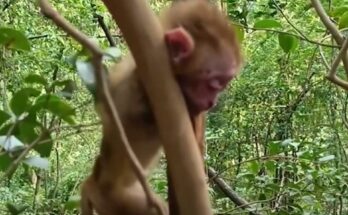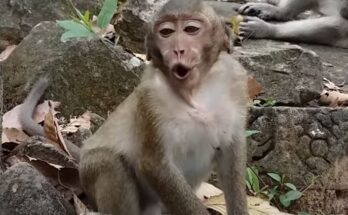Winter’s icy grip spares no one, not even our closest animal relatives. Across regions where freezing temperatures prevail, wild monkeys face a harsh battle for survival. The unforgiving cold, compounded by food scarcity, takes a brutal toll on these resilient creatures, leaving many with frostbitten limbs and empty bellies.
As temperatures plummet, monkeys struggle to retain body heat. Frostbite, a cruel consequence of prolonged exposure to the cold, damages their extremities—tails, fingers, and toes. Without shelter or medical intervention, these wounds often worsen, hindering their ability to climb, forage, or escape predators. The frostbitten injuries symbolize their relentless fight against nature’s harshest elements.
Winter also exacerbates their hunger. Food sources like fruits, leaves, and insects dwindle, forcing them to rely on tree bark or scavenged human waste—nutritionally inadequate options. In some regions, monkeys venture into human settlements, risking conflict with humans in their desperate quest for sustenance.
Beyond individual survival, the struggle affects entire troops. Social dynamics can shift, with stronger individuals monopolizing limited food. The weaker members, often juveniles or elderly monkeys, are left more vulnerable to starvation.
Conservationists and animal welfare groups are increasingly aware of this plight, working to provide relief. Supplemental feeding programs and awareness campaigns encourage locals to protect, rather than harm, these animals. However, these efforts remain limited compared to the scale of the challenge.
The winter plight of hungry monkeys is a sobering reminder of how climate and environmental changes affect wildlife. Protecting their habitats and fostering coexistence with humans are essential steps to ensure their survival. As we navigate our shared winters, their endurance calls for empathy and action.


